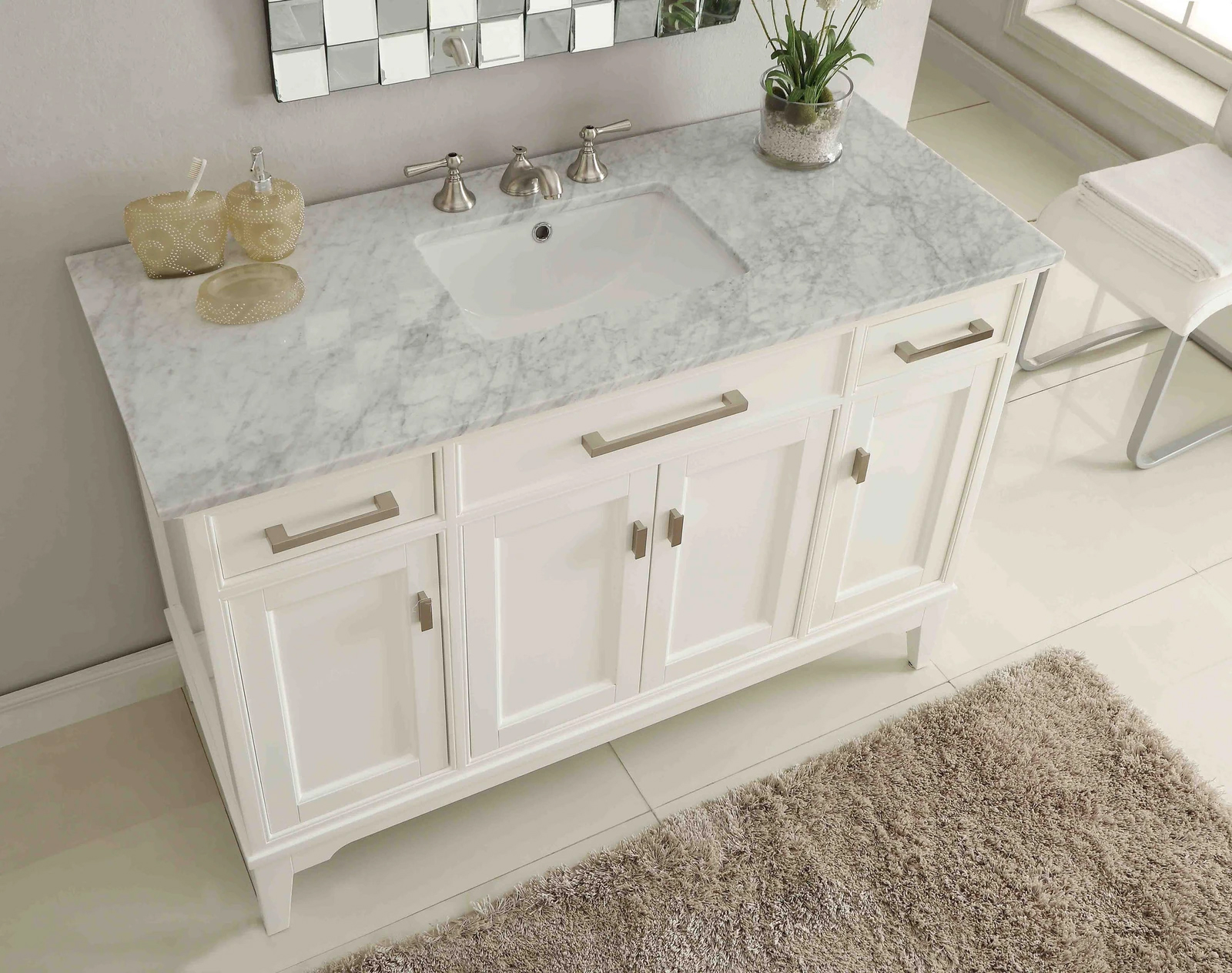Marble Bathroom Basin Unit


A marble bathroom basin unit is a statement piece that elevates the aesthetic appeal of any bathroom. Its natural beauty and durability make it a popular choice for homeowners seeking a touch of luxury and sophistication. Marble’s versatility allows for a wide range of design possibilities, catering to various bathroom styles and preferences.
Marble Types and Characteristics, Marble bathroom basin unit
Marble’s unique characteristics, including its color, veining, and durability, play a significant role in its appeal for bathroom basin units.
- Carrara Marble: Renowned for its white background with delicate grey veining, Carrara marble exudes elegance and sophistication. Its subtle veining patterns create a timeless and classic look. It is known for its durability and resistance to scratches and stains.
- Calacatta Marble: This marble variety is characterized by its striking white background with bold, dramatic veining patterns in shades of gold, grey, or black. Calacatta marble is a luxurious choice that adds a touch of grandeur to any bathroom.
- Statuario Marble: With its pristine white background and dramatic, bold veining patterns, Statuario marble is considered the epitome of luxury. Its intricate veining patterns add depth and visual interest to the bathroom space.
- Nero Marquina Marble: This black marble with striking white veining patterns creates a dramatic and sophisticated ambiance. It is an excellent choice for creating a modern and minimalist bathroom aesthetic.
Marble Bathroom Basin Unit


Installing and maintaining a marble bathroom basin unit requires careful consideration to ensure its longevity and beauty. Proper installation ensures a functional and aesthetically pleasing fixture, while regular maintenance helps preserve its pristine condition. This section provides a comprehensive guide on the installation process, care tips, and common issues that may arise, along with their solutions.
Installation
Installing a marble bathroom basin unit involves several steps, ensuring proper plumbing and countertop connections. Here’s a detailed guide:
- Prepare the Countertop: Ensure the countertop is level and provides adequate support for the basin. Cut a hole in the countertop, ensuring it fits the basin’s dimensions precisely.
- Connect the Plumbing: Connect the basin’s drain to the plumbing system. Ensure the drain is properly sealed to prevent leaks. Connect the hot and cold water supply lines to the basin’s faucets, ensuring they are securely tightened.
- Install the Basin: Carefully place the basin into the cutout on the countertop. Secure the basin using a sealant or adhesive, ensuring it is firmly attached and level.
- Test the Connections: After installation, test the plumbing connections for leaks. Turn on the faucets and check for any leaks from the drain or supply lines.
Maintenance
Proper maintenance is crucial to preserve the beauty and longevity of a marble bathroom basin unit. Here are some essential tips:
- Clean Regularly: Clean the basin with a mild detergent and a soft cloth. Avoid abrasive cleaners, as they can damage the marble’s surface.
- Dry Thoroughly: After cleaning, dry the basin thoroughly to prevent water spots and mineral buildup.
- Seal Regularly: Apply a sealant to the marble surface every few months to protect it from stains and water damage. Sealants create a protective barrier that repels water and stains.
- Avoid Harsh Chemicals: Avoid using harsh chemicals or acidic cleaners on the marble surface. These can damage the marble and dull its shine.
- Protect from Scratches: Avoid placing sharp objects or heavy items directly on the marble surface. Use coasters or trivets to protect the basin from scratches.
Common Issues and Solutions
Marble bathroom basin units can experience common issues over time. Here are some typical problems and their solutions:
- Staining: Marble is porous and susceptible to staining. Avoid spills and clean up spills immediately. Use a specialized marble cleaner to remove stains.
- Etching: Acidic substances like vinegar or citrus juices can etch the marble surface. Clean up spills promptly and use a pH-neutral cleaner.
- Cracking: Heavy objects or impacts can cause cracks in the marble. Avoid placing heavy items directly on the basin. If a crack appears, consult a professional for repair.
- Water Damage: Water can seep into the marble’s pores, causing damage. Ensure the basin is properly sealed and dried after use. Address any leaks promptly.
